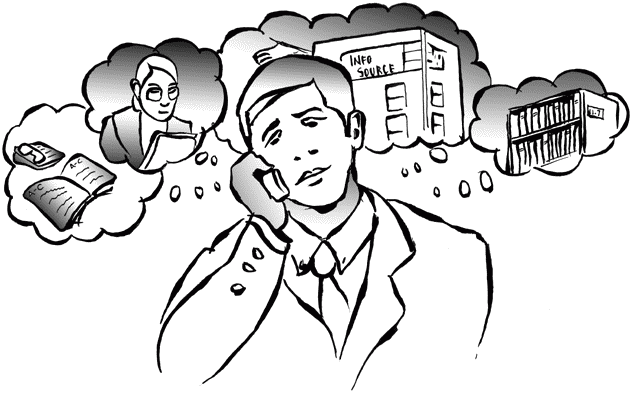WebReference.com - Chapter 4 from Content Management for Dynamic Web Delivery. (4/5)
[previous] [next] |
Content Management for Dynamic Web Delivery
An organizational Information Model
Several years ago, I conducted an interesting and significant test of an organization's informal Information Model. A state department of vocational rehabilitation needed to answer questions from its constituencies, which included disabled individuals seeking job assistance and companies inquiring about hiring and supporting the disabled. Much of the information to answer these questions could be found somewhere in the large volumes of government regulations and policy statements maintained in the organization's library, in the offices of staff members, and in the heads of key employees. Unfortunately, the right person with the right information to respond to a question wasn't always available. Or, the person taking the question would not always know whom to ask. As a result, some customer questions were not being handled as well as management wanted. They needed a content-management system to support their goal of being responsive to their constituencies. I conducted an Information Audit of their responses to provide a design concept and cost justification for the new system.
The audit was simple and interesting to conduct. Based on a well-researched list of typical questions developed by the experienced managers, members of my staff called at random with requests for information. They recorded how long it took to obtain the right answer. Most of the time, the department staff was very effective. Calls were answered promptly; often the person taking the call could provide the correct answer immediately or within a few minutes. But, at times, callers were shifted around to several individuals without obtaining a satisfactory answer to the questions. In other cases, the promised materials never arrived in the mail. Sometimes the materials received weren't the right ones. Although the staff was very competent as a whole, better internal access to information resources was sorely needed (see the cartoon below).

People use many sources to find the information they need: other people,
the library, books nearby on office shelves, sources in other organizations. A
sound Information Model ensures that the sources of information are effectively
categorized according to the users' conceptual model of the information.
An Information Model could be built so that it facilitated ease of access and accuracy of response. In this instance, much of the information needed to answer questions was available, although not always quickly available. In cases where the correct information was not available at all, the gap meant that new information assets should be developed.
The investigation showed that a content-management system was needed. To be effective, the content-management system needed to be based on a sound Information Model, one that would become the eventual framework for a content-management system. The immediate goal was to make the information resources readily available to the staff members. The long-term goal was to make the information resources available to the outside customers through an Internet site. If it was well designed, the Web site would allow the agency's constituents to find their own answers even more quickly and easily than by calling in.
A place for everything
One way to think about an Information Model is as a large filing systema place for everything and everything in its place. In fact, you have the real life example of the library as a content-management system that embodies a particular Information Model. Through familiarity, people learn to make effective use of a common and consistent Information Model to find what they need.
At university, I learned how to use the graduate library which was organized according to the Library of Congress' Information Model. I knew exactly where to find the books I needed, often without using the electronic catalog system that had recently replaced the old paper card catalog system. I knew which floor the eighteenth century history books were on and where to find the art history as well. In fact, I could walk into any university library and pretty much find my way around. The Information Model on which these libraries are based is quite uniform among higher-education institutions. It gives you a nice, comfortable feeling of continuity. The books are where you expect them to be. Each book has a number that identifies its place on the shelves, and experienced users who have learned how the system works feel very much at home.
Unfortunately, not all libraries are the same. Going to a different kind of library is as disconcerting as venturing into a new Web site.
In recent years, I have used the local community library far more often than I use the university library. My local library was at first really confusing; nothing was where I expected it to be. The reasonthey manage their content using a different Information Model, a different arrangement of categories, based on the Dewey Decimal system, which is often used to organize community libraries. I was frustrated to discover that the books by my favorite author were in one location while the books about the author were in quite a different location. Eventually I figured out the system but I have never felt quite at home with it.
Information Models not only facilitate fast search and retrieval, they also create a sense of familiarity and belonging for their users. As experienced users of a content-management system based on a sound Information Model, you know where to find what you need. It's right there in the same place it was last time and exactly where you expected. As a library user, the Information Model underlying the library's content-management system allows you to manage the content effectively for yourself.
[previous] [next] |
Created: February 6, 2002
Revised: February 6, 2002
URL: https://webreference.com/programming/authoring/languages/html/dynamic/chap4/4.html


 Find a programming school near you
Find a programming school near you